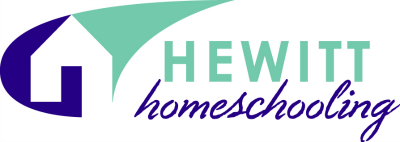
Hewitt Homeschooling has been helping homeschooling families for over three decades. They strive to introduce great literature to your children, while helping them with reading, writing, and communication skills.
Recently, Hewitt Homeschooling designed the Lightning Literature series for elementary children. Last year, they introduced the first grade level and the second grade level will be available this fall.
We were thrilled to review the Lightning Literature for first grade.
We received the following:
Lightning Literature and Composition: Grade 1 Teacher's Guide, $29.95
Lightning Literature and Composition: Grade 1 Student Workbook, $49.95
Recently, Hewitt Homeschooling designed the Lightning Literature series for elementary children. Last year, they introduced the first grade level and the second grade level will be available this fall.
We were thrilled to review the Lightning Literature for first grade.
We received the following:
Lightning Literature and Composition: Grade 1 Teacher's Guide, $29.95
Lightning Literature and Composition: Grade 1 Student Workbook, $49.95
I love to snuggle up on the couch and read books with my girls. It is my favorite part of the day. I was so excited when I discovered that the Lightning Literature series incorporates award-winning children's books into their curriculum. There are 36 weeks of organized lessons and activities. Each week incorporates one amazingly awesome picture book to read with your child. Here is the list of the books that are covered throughout the year.
qqqqqqqqqqqqqqqqqqqqqqqqqqqqqqqqqqqqqqqqqqqqqqqqqqqqqqqqqqq
What's included in the Lightning Literature and Composition First Grade: Teacher Guide?


-The soft bound teacher's guide has a total of 306 pages.
-At the beginning of the teacher's guide, there is a detailed introduction on how to use the curriculum and a brief overview of the suggested daily schedule. The curriculum is intended to be used 4 days a week for 36 weeks. Your student will complete three sections, Literature, Grammar and Mechanics, and Composition, each day.
-The reminder of the teacher's guide is divided into 36 weeks. Each week begins with brief glance of the week, which includes objectives and needed materials. Followed by detailed daily lessons plans, including questions and discussion topics for each book, grammar and mechanics instruction, and weekly composition activities.
-Here is a sample week from the teacher's guide.
qqqqqqqqqqqqqqqqqqqqqqqqqqqqqqqqqqqqqqqqqqqqqqqqqqqqqqqqq
What's included in the Lightning Literature and Composition First Grade: Student Workbook?

-The consumable soft bound student workbook contains a total of 465 perforated, hole-punched pages.
-The student workbook is divided into 36 weeks. Each week has daily colorful lessons and/or activities to complete.
-There is a sample week available to preview. It will give you a clear idea of how each week is set-up.
qqqqqqqqqqqqqqqqqqqqqqqqqqqqqqqqqqqqqqqqqqqqqqqqqqqqqqqqqqqq
How did we use the Lightning Literature and Composition First Grade curriculum?
-We used the curriculum on a daily basis during the review period. We followed the suggested schedule found in the teacher's guide. Specific days follow the same sequence, weekly.
-Every Monday, the book of the week was introduced, which we read together as a read-aloud, then Izzie would answer the provided comprehension questions. There is a space provided in the Teacher's guide to record your student's answers; however, I found it more convenient not to use the provided space. Afterward, she would complete a corresponding grammar and mechanics workbook page found in her Student Workbook. Finally, she would complete a composition activity.
.jpg) |
| Lightning Literature and Composition First Grade: Teacher's Guide, Week 1 |
.jpg) |
| Lightning Literature and Composition First Grade: Student Workbook, Week 1: Monday |
-Tuesday is referred to as Narration Day. Instead of rereading the book of the week, Izzie would retell as much of the book as she could remember, including the story, character, setting, external and internal details, and conflict. Again, she would complete the corresponding grammar and mechanics workbook page found in her Student Workbook. Afterward, she would complete a different composition activity.
.jpg) |
| Lightning Literature and Composition First Grade: Student Workbook, Week 1: Tuesday |
-On Wednesdays, we would reread the book of the week. This time Izzie would read the book to me. Afterward, she would answer the provided questions, which were more inferential and evaluative. On Wednesdays, there are optional workbook page activities, such as completing dictionary, alphabet, or sentences pages. Izzie did not complete these activities, since we aren't schooling full-time this summer. However, she will complete these activities once we start school in the fall.
-Every Thursday, there is a specific Aesop's fable assigned to be read. Afterward, there is a grammar and mechanics workbook page to be completed. Finally, your student will write their final draft from the week's composition activities.
.jpg) |
| Lightning Literature and Composition First Grade: Student Workbook, Week 1: Thursday |
-Fridays are free days. We normally used this time to read other books from the week's author.
qqqqqqqqqqqqqqqqqqqqqqqqqqqqqqqqqqqqqqqqqqqqqqqqqqqqqqqqqqqqq
What did I like about the Lightning Literature and Composition First Grade curriculum?
1. It was very simple to incorporate the curriculum into our daily schedule. It took Izzie an average of 30 minutes a day to complete all assignments.
2. It is very parent-friendly. Besides a trip to the local library, everything is already planned for me! We only needed the weekly book, the teacher's guide, and the student workbook to complete the assignments.
3. The teacher's guide is extremely organized and contains detailed instructions with daily lessons plans. There was very little prep, which saved me a lot of time.
4. The student workbook contains short, colorful lessons and activities that are age appropriate. The workbooks pages are easily transferable to a binder since they are already perforated and hole-punched.
5. Izzie is being exposed to amazing children's literature, while learning to read and write.
qqqqqqqqqqqqqqqqqqqqqqqqqqqqqqqqqqqqqqqqqqqqqqqqqqqqqqqqqqq
I would highly recommend the Lightning Literature and Composition First Grade curriculum. I'm looking forward to purchasing the second grade curriculum this fall.
1. It was very simple to incorporate the curriculum into our daily schedule. It took Izzie an average of 30 minutes a day to complete all assignments.
2. It is very parent-friendly. Besides a trip to the local library, everything is already planned for me! We only needed the weekly book, the teacher's guide, and the student workbook to complete the assignments.
3. The teacher's guide is extremely organized and contains detailed instructions with daily lessons plans. There was very little prep, which saved me a lot of time.
4. The student workbook contains short, colorful lessons and activities that are age appropriate. The workbooks pages are easily transferable to a binder since they are already perforated and hole-punched.
5. Izzie is being exposed to amazing children's literature, while learning to read and write.
qqqqqqqqqqqqqqqqqqqqqqqqqqqqqqqqqqqqqqqqqqqqqqqqqqqqqqqqqqq
I would highly recommend the Lightning Literature and Composition First Grade curriculum. I'm looking forward to purchasing the second grade curriculum this fall.
Be sure to sail over to see what other Crew Mates had to say about their experience with Hewitt Homeschooling!

.jpg)








































.jpg)
.jpg)
.jpg)





.jpg)
.jpg)
.jpg)
.jpg)
.jpg)
.jpg)
.jpg)
.jpg)
.jpg)

